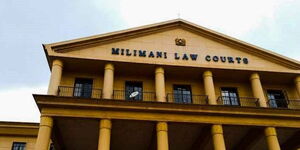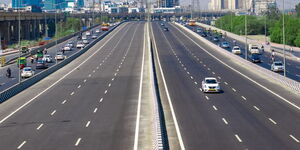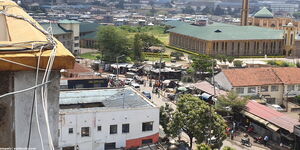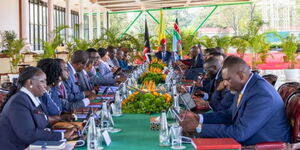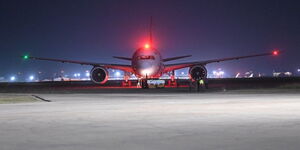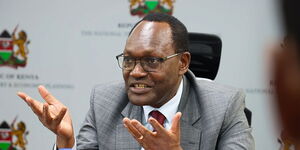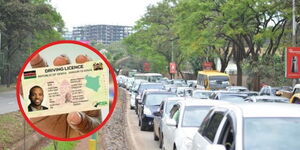On June 10, 2020, the government embarked on an ambitious plan of constructing the Nairobi Expressway, which is nearing completion, with the aim of easing traffic congestion in the capital city of Nairobi.
The road, which is one of President Uhuru Kenyatta's legacy projects and covers a distance of approximately 27kms, will be the first chargeable road in the country, with motorists expected to pay every time they use it.
On Tuesday, March 22, a Gazette Notice No. 11326 indicating the rates chargeable surfaced online, drawing the attention of motorists who termed the costs - that ranged between Ksh100 and Ksh310 as exorbitant.
The routes covered in the schedule include Mlolongo, Standard Gauge Railway (SGR), Jomo Kenyatta International Airport (JKIA) Eastern Bypass, Southern Bypass, Capital Center, Haile Selassie, Museum Hill, Westlands, and James Gichuru Road.
However, a spot check by Kenyans.co.ke established that the information making rounds was extracted from Gazette Notice No. 11326, published on December 31, 2020.
The directive to charge motorists using the road was introduced upon the commencement of the construction works but was later suspended by the Ministry of Transport and Infrastructure.
It was reintroduced in Parliament through the Public Finance Management Regulations 2021 seeking to establish the National Roads Toll Fund.
The regulations seek to implement the Public Roads Toll Act 407, which guides how the government imposes toll fees on national highways.
It gives power to the Transport Cabinet Secretary to earmark any road including a bridge, tunnel, or public road as a toll road, meaning motorists have to pay to use it.
In March 2022, the move to reintroduce toll gained traction after The National Assembly’s Committee on Delegated Legislation approved the Public Finance Management (National Road Toll Fund) Regulations 2021.
The model targets infrastructure projects built using the Public-Private Partnership (PPP). It was touted as a means of funding new roads, airports, seaports, railways and power plants.
The decision to re-introduce the tools now lies with the Members of Parliament even as the country readies for the official opening of Nairobi Expressway, for which motorists will be charged depending on the distance covered.
China Road and Bridge Construction (CRBC) received approval to take charge of the toll project with estimated charges falling between Ksh100 and Ksh1,550.
However, plans to introduce tolls on major highways dates back 1980s. A decade later, the government scrapped the move introducing road maintenance levy following public outcry.
In 2016, Kenya National Highway Authority (KeNHA) erected billboards on plans to introduce toll charges on Southern Bypass. The directive caused uproar forcing Transport Cabinet Secretary, James Macharia, to suspend the plan.
"Whereas the government has proposed to develop and maintain some roads in the country through tolls, the said billboards are premature and unauthorised as the government is yet to adopt an elaborate policy on road tolling," Macharia stated.
At the moment, only Nairobi will remain eligible for charging motorists using the 27 kilometer long highway running from Mlolongo to Westlands.

